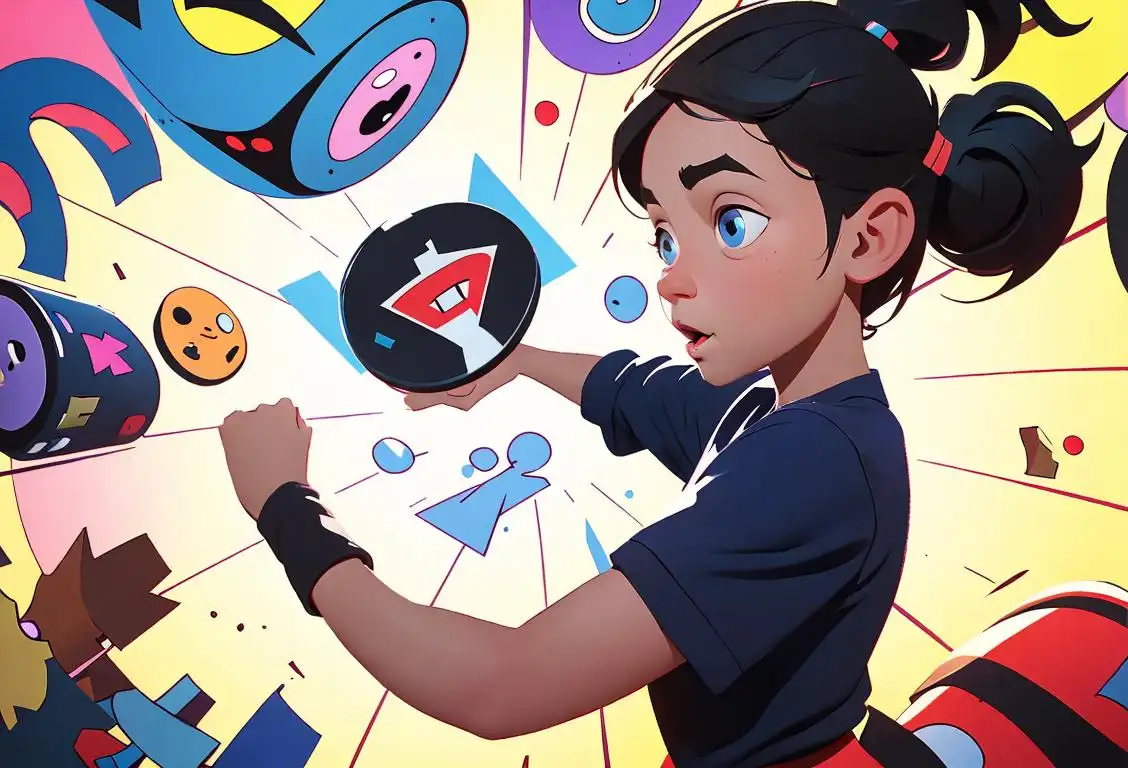National Dance Day

Who doesn't love to shimmy, shake and bust a move? National Dance Day is an iconic day that has seen its popularity surge and twirl online with 87345 mentions! Let's put on our dancing shoes, groove to our favorite tunes and delve into the exciting history of this dance-tastic day.
When is Dance Day?
It's national dance day on the 25th July.
Twirling Through Time
From the cha-cha-cha to the classic waltz, dance has long been a joyous expression of art and culture. National Dance Day, though not as ancient as the art itself, certainly celebrates this universal love for moving and grooving. The grand gala of rhythm saw its most celebrated year in 2015 when it waltzed its way to generating 87345 mentions online, turning 25th July 2015 into an all-out boogie marathon!
Finding the Rhythm
National Dance Day, crafted in the crucible of rhythm and elegance, is both a celebration and an invitation. An invitation for folks to express themselves, explore new dance forms, and embrace the magic of movement. This day is not just for the prima ballerinas or the breakdancing wizards; it’s for everyone and anyone who can feel the rhythm in their heart. It emphasizes the idea that there is no right or wrong way to dance and highlights the psychological, physical, and emotional benefits that dancing can bring.
Keep the Beat Going
Whether you enjoy engaging in a heated tango, flitting about in a ballet, or diligently perfecting your TikTok dance challenge, National Dance Day is the perfect occasion to unite and uplift. It's a day that taps the energy of skilled dancers, aspirants, and unabashed bathroom mirror performers alike, and turns the world into one big parquet floor. So the next time July 25 comes rolling around, don't forget to let loose and shake a leg - after all, the world is your dance floor!
History behind the term 'Dance'
6000 BCE
Earliest Evidence of Dance
Dance has been an integral part of human culture since ancient times. The earliest evidence of dance can be traced back to approximately 6000 BCE during the Stone Age. Archaeologists have discovered cave paintings in India depicting people engaged in rhythmic movements, suggesting that dance was likely used as a form of communication or religious ritual by early humans.
3000 BCE
Dance in Ancient Egypt
In ancient Egypt, dance played a significant role in religious ceremonies and celebrations. It was believed that dance was a way to communicate with the gods and invoke their blessings. Egyptian hieroglyphs depict dancers with graceful and elegant movements, showcasing the importance of dance in their society.
5th Century BCE
Greek Influence on Dance
The ancient Greeks introduced a new level of sophistication to dance. They believed that dance should be an expression of harmony between the body and the soul. Greek philosophers, such as Plato and Aristotle, emphasized the importance of dance in education and physical development. The Greeks also introduced different dance forms, including the pyrrhichios (a war dance) and the kordax (a lively, comedic dance).
15th Century
Renaissance Court Dance
During the Renaissance period in Europe, dance became an integral part of courtly life. Dances were performed at lavish royal courts and were highly stylized and choreographed. The nobility learned and practiced intricate dance steps as a form of entertainment and to showcase their social status. Dance masters emerged during this time to teach the art of formal dance.
19th Century
Birth of Ballet
In the 19th century, ballet emerged as a distinct and formal dance form. It combined elements of classical dance techniques, storytelling, and music. Ballet performances became grand spectacles, showcasing elaborate costumes, intricate choreography, and the skills of highly trained dancers. The establishment of ballet academies and professional ballet companies further solidified ballet as a respected art form.
20th Century
Influence of Social and Cultural Movements
The 20th century witnessed a tremendous diversification in dance styles and genres. Influenced by social and cultural movements, new dance forms such as modern dance, jazz dance, and hip-hop emerged. Choreographers like Martha Graham, Isadora Duncan, and Alvin Ailey pushed the boundaries of traditional dance, exploring new movements and themes. The global reach of dance expanded with the growth of dance companies, festivals, and competitions.
Present Day
Dance as a Universal Language
Today, dance continues to be a vibrant and integral part of cultures worldwide. It serves as a means of personal expression, cultural preservation, entertainment, and even as a form of exercise. Dance styles constantly evolve and blend together, reflecting the diverse influences of different cultures and artistic expressions. From traditional folk dances to contemporary performances, dance remains a powerful tool for communication and storytelling.
Did you know?
Did you know that National Dance Day was introduced in 2010 by Nigel Lythgoe, the co-creator of 'So You Think You Can Dance', a popular reality TV dance competition?Tagged
romance awareness fun sportsFirst identified
24th March 2015Most mentioned on
25th July 2015Total mentions
87345Other days
Believe Day
Family Day
Action Day
Opposite Day
One Day
Awareness Day
Happiness Day
Suicide Prevention Month Day
Dance Day
Boy Friend Day








